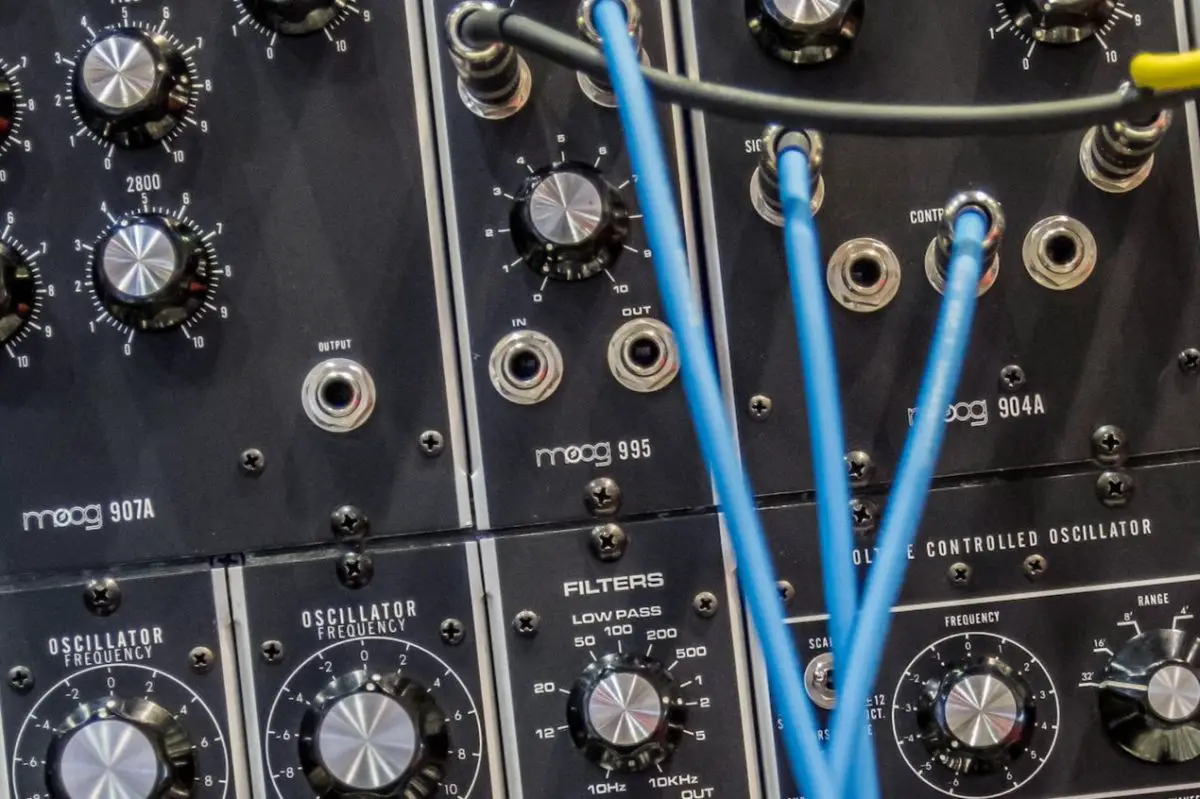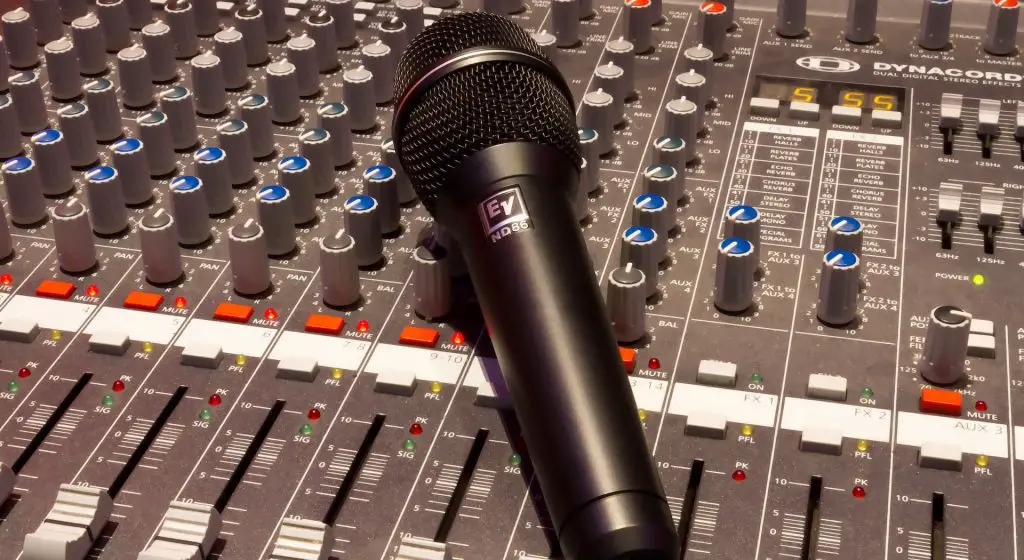Hey, fellow music enthusiasts! Let’s dive into the world of audio inputs, where everything starts. What is an input in audio? It’s like the gateway to sonic awesomeness, connecting your instruments and microphones to your audio interface, mixer, or recording device.
In this blog post, you’ll learn about the different types of audio inputs, how to connect them in a studio setting, and the key factors to consider when choosing the right one for your music production or live sound setup. Stick around, and let’s make some noise together!
What is an input in audio? An input in audio refers to the point where a signal, such as a microphone or an instrument, connects to an audio interface, mixer, or recording device for further processing or recording.
What is an input?
An input is a signal source or a point where an audio signal, such as from an instrument or microphone, connects to an audio interface, mixer, or recording device for further processing or recording. Inputs accept output signals—audio-frequency voltages—from external equipment, enabling the transmission and processing of audio data.

There are various types of audio inputs, including microphone inputs, line inputs, digital audio inputs, analog audio inputs, and MIDI inputs. Each type serves a unique purpose in music production and live sound.
AKAI Professional MPK Mini MK3

AKAI Professional MPK Mini MK3
How do various types of audio inputs work?
When it comes to audio inputs, we’ve got a few major players in the game: microphone inputs, line inputs, digital audio inputs, analog audio inputs, and MIDI inputs. Each of these types serves a unique purpose in the world of music production and live sound.
1. Microphone inputs
Microphone inputs are designed for – you guessed it – microphones! They amplify low-level signals from mics so that they can be properly processed and recorded.
2. Line inputs
Line inputs handle higher-level signals from sources like synthesizers or external preamps. These inputs don’t need as much amplification as mic inputs.
3. Digital audio inputs
Digital audio inputs, like S/PDIF or ADAT, transmit audio data digitally from one device to another, ensuring a clean, high-quality signal with minimal interference.
4. Analog audio inputs
Analog audio inputs, such as XLR, TRS, or RCA, convert electrical signals from instruments or mics into analog signals that can be processed or recorded. These inputs are more susceptible to interference, but they offer a classic, warm sound that some musicians love.
5. MIDI inputs
MIDI (Musical Instrument Digital Interface) inputs are used to connect digital instruments, like keyboards or drum machines, to an audio interface or computer, allowing you to control and manipulate the instrument’s sounds through software or hardware sequencers.

What are the common audio input devices?
Common audio input devices include microphones, guitars, and digital instruments like keyboards or drum machines. Microphones are used to capture a person’s voice or other acoustic sounds, which are then converted by a sound card into digital codes that the computer can store and process.
Guitars serve as audio inputs, as they are the original source of a signal, and their output is sent to amplifiers or recording devices. Digital instruments, such as keyboards or drum machines, connect to audio interfaces or computers via MIDI inputs, enabling control and manipulation of their sounds through software or hardware sequencers.
What is the difference between audio output and input?
The primary difference between audio input and output lies in their roles in the audio signal chain. Audio input refers to a signal source or a point where an audio signal, such as from an instrument or microphone, connects to an audio interface, mixer, or recording device for further processing or recording.
… audio output is a device, connector, or endpoint in a signal chain that projects the audio signal or sends it out to another device…
An input accepts the output signal, an audio-frequency voltage, from an external piece of equipment. On the other hand, audio output is a device, connector, or endpoint in a signal chain that projects the audio signal or sends it out to another device or link in the signal chain, such as an amplifier that projects the audio signal. Audio outputs produce signals that drive another unit’s input, effectively translating an input signal into workable audio.
How do audio inputs impact sound quality?
When it comes to sound quality, audio inputs play a crucial role in the overall listening experience. To ensure top-notch sound quality, it’s essential to choose the right input device, such as a high-quality microphone or instrument, and use proper cables and connectors. For example, investing in a good-quality condenser microphone can drastically improve the recording quality of vocals or acoustic instruments.
It’s also essential to select the appropriate audio interface or mixer that matches the requirements of your input devices. By doing so, you’ll maintain the integrity of the input signal, minimizing any potential loss or distortion that could occur during the conversion process.
Remember, a well-chosen audio input setup can make a world of difference in achieving that perfect sound you’re after. Trust me, your ears and your audience will thank you for it!
If you want even more tips and insights, watch this video called “Audio Interface Inputs and Outputs Explained” from Chris’s Sound Lab YouTube channel.
Frequently asked questions (FAQ)
Do you still have questions about input in audio? Below are some of the most commonly asked questions.
What types of devices can serve as audio inputs?
Audio input devices can include microphones, instruments (like guitars, keyboards, or electronic drum kits), and other sound sources (like smartphones, tablets, or computers) that provide an audio signal to be processed, recorded, or amplified.
How do I connect an audio input device to my computer or recording equipment?
To connect an audio input device, you’ll typically need an appropriate cable or connector, such as an XLR cable for a microphone or a 1/4-inch cable for a guitar. Additionally, you may require an audio interface or mixer to properly convert and transmit the input signal to your computer or recording equipment.
Can I use multiple audio inputs simultaneously for recording or live performances?
Yes, you can use multiple audio inputs simultaneously. To do so, you’ll need a mixer or an audio interface with multiple input channels. This allows you to connect and control multiple input devices at once, providing greater flexibility and control over your sound during recording sessions or live performances.
Conclusion
Well, it’s time to wrap up our sonic journey exploring the world of audio inputs. We hope we’ve hit the right note in answering your questions about inputs in audio. Did we strike a chord with you? And did I cover everything you wanted to know? Let me know in the comments section below. I read and reply to every comment.
If you found this article helpful, share it with a friend, and check out my full blog for more tips and tricks on audio technology. Thanks for reading, and may your audio adventures always be in tune!
Key takeaways
This article covered what an input is in audio. Here are some key takeaways:
- An audio input is a signal source that sends audio information to another device for processing or amplification.
- Common audio input devices include microphones, instruments, and line-level sources.
- The main difference between audio inputs and outputs is that inputs send signals, while outputs receive and project them.
- Audio inputs can be found in various equipment like mixers, audio interfaces, and computers.
- Understanding the role of audio inputs can help improve your audio recording and processing experience.















